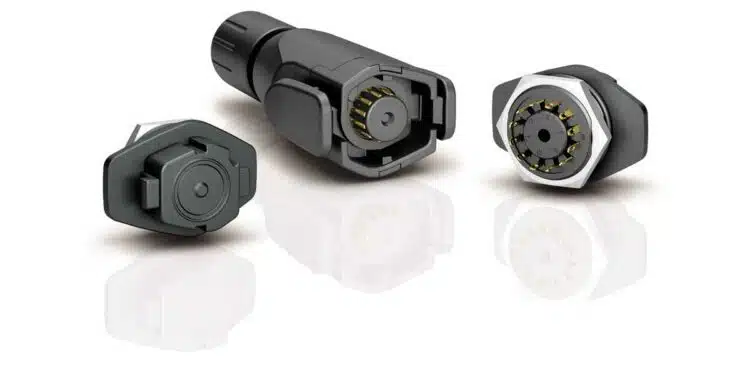binder, a provider of industrial circular connectors, is expanding its portfolio: The Easy Locking Connector (ELC) of the 570 series, originally developed for homecare applications and already proven in many medical applications, is now also available in black.
This new color variant is the result of increased demand from the industry. The shock- and vibration-resistant ELC remains available in a 12-pin version.
“The decision to introduce a black variant is based on industry requests. While light gray is commonly used in homecare applications, where this product originated, black is more in demand in industrial environments. Here, it is not necessarily required to immediately recognize contamination,” explains Jana Wagner, Product Manager at binder.
The Easy Locking Connector of the 570 series is suitable for both medical applications and industrial requirements. Featuring a snap-in locking mechanism and an asymmetrical hexagonal contour in the plug section, this cable connector ensures high operational safety and a long service life. The ergonomically shaped housing is made of durable PA66 plastic.
Ideal for Frequent Plug-and-Play in Industrial Settings
With over 5,000 mating cycles, the Easy Locking Connector is ideal for applications requiring intuitive and frequent plugging and unplugging. The snap-in locking mechanism and asymmetrical hexagonal contour prevent incorrect mating, making handling particularly easy. Additionally, the connector’s design effectively prevents unauthorized opening and accidental contact with cable ends.
If the cable connector needs to be reopened after assembly, a corresponding release tool is available. The flange socket is protected against dust and splashing water from all sides with an IP54 rating, even when unplugged. This eliminates the need for an additional protective cap, saving both time and costs for the end customer.
Jana Wagner states: “A prime example of an industrial application is display connectivity, allowing machine statuses to be easily retrieved. Here, a high number of mating cycles, IP protection rating, and intuitive operation are key factors.”
For device installation, various sealing options are available to enable flexible mounting. In addition to an O-ring, a flat gasket can also be used, eliminating the need for a recess in the housing.































